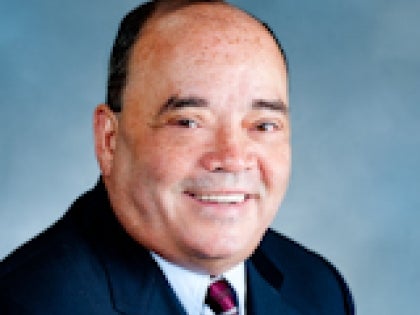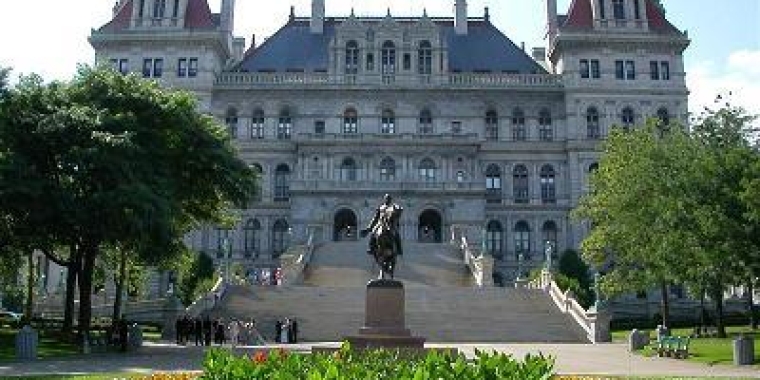
CAPITAL: New York’s forgotten high-speed rail study
On Tuesday, following months of delays, the Federal Railroad Administration quietly posted to its website a New York State study study outlining five different options for "high speed rail" connecting New York City to Niagara Falls.
The study was supposed to have been released in June, after it was reviewed by the federal government, and as recently as this morning, New York State's transportation commissioner was apparently still unaware that the review was complete.
"The environmental impact study for high speed rail ... was due on June 12," State Senator Martin Malave Dilan said to state transportation commissioner Joan McDonald this morning, during a transportation hearing in Albany. "Has that been completed or released yet?"
"We are in the process right now of finalizing that draft environmental impact statement with the Federal Railroad Administration," she responded. "And it will be released very soon."
A follow-up call to the F.R.A. revealed it had been released on Tuesday.
Governor Andrew Cuomo, to whom McDonald reports, used to be much more bullish on high-speed rail.
Three days after he was elected governor in 2010, he wrote a letter to then-U.S. transportation secretary Ray LaHood asking him to give New York State the high-speed rail stimulus monies that other states appeared poised to reject, describing high-speed rail as "critical to building the foundation for future economic growth, especially Upstate."
"High speed rail could be transformative for New York—with the potential to revitalize Upstate New York’s economy with construction jobs now and permanent jobs created by the new high speed rail links to New York City, Toronto and Montreal in the future," wrote Cuomo. "That is why I made high speed rail a priority during my campaign, and that is why it will continue to be a top priority for me as Governor."
It hasn't been.
In pre-Cuomo 2010, the state passed a bill requiring the governor and legislature to appoint a "temporary high speed rail planning board" within the state transportation department "to advise the Department on the implementation of a high speed rail system for the State."
The panel was supposed to last just three years, because its work would presumably be done by then. The law authorizing its creation has since expired.
"Did this board ever convene, did it ever produce a report on high-speed rail?" Dilan asked McDonald today.
"The high speed rail planning board has not met under my tenure," said McDonald. "I don't believe all of the members have been appointed."
That Cuomo's ambitions for high-speed rail have waned is perhaps also reflected in the draft environmental impact statement released this week.
The study (viewable here) lays out five different options for improvements to the 463-mile Empire Corridor, which runs north from Penn Station in New York City up to Albany along largely commuter tracks. From there, it veers west along privately controlled tracks dominated by freight trains all the way to Buffalo, then it heads north again along mostly commuter tracks to Niagara Falls.
The first option is the no-build one. Two options would allow speeds of up to 90 miles per hour, and the final two would in some sections allows speeds along the corridor of up to 110 mph and 125 mph, respectively.
Why might any of this be necessary?
The state's existing passenger rail service has "inadequate service levels," according to the study.
"For example, the trip from Buffalo to New York City can be made in less than two hours by air and under seven hours by car, compared to approximately eight hours by the existing Empire Corridor passenger service provided by Amtrak."
Trains too often run late and infrequently.
Nevertheless, ridership continues to increase and congestion is expected to worsen "as demand for intercity passenger, commuter, and freight rail services all continue to grow."
The goal of the state's High Speed Rail Empire State Corridor Program is to transform the Empire Corridor from a lumbering, inadequate system into one that is frequent, punctual and fast.
But not all that fast.
The state, working with the federal government, has whittled down ten initial options to the aforementioned five, and discarded every option that would entail maximum speeds of 160 mph and 220 mph—in other words, high-speed rail of the sort they have in countries that care more about infrastructure.
The "very high speed" alternatives "were rejected for their extremely high cost—nearly triple the next most costly alternative—the likelihood of significant community and environmental impacts, and significant engineering design difficulties necessary to create a sufficiently straight track alignment to permit those speeds," the report reads.
Here, in rough outline, is what's left:
The "base" do-nothing option, with average speeds of 51 mph and nine-hour travel times from New York City to Niagara Falls.
There's a $1.66 billion option that would add 64 miles of new mainline track, allowing speeds of up to 90 miles per hour between Schenectady and Buffalo, but with an average speed of 57 mph. The New York City to Niagara trip would take eight hours.
There's a $5.58 billion alternative that would add a dedicated passenger track for 273 miles between Schenectady and Buffalo, allow train speeds of up to 90 mph and increase the average speed to 61 mph. The trip to Niagara Falls would take seven-and-a-half hours.
There's a $6.25 billion option that would also add a new fourth main track in some locations, allow maximum speeds of up to 110 mph, and an average speed of 63 mph. The trip to Niagara Falls would take slightly less than seven-and-a-half hours.
And, finally, the $14.71 billion option: a two-track, grade-separated, 283-mile corridor between Albany and a new Buffalo station, some of it along new elevated tracks. Average speeds would hit 108 mph for non-Amtrak trains between Albany and Buffalo. Trains in some places would hit maximum speeds of 125 miles per hour, with the overall average speed hitting 77 mph on the express track (53 on the local). The travel time to Niagara would, on the express tracks, fall to six hours.
Public hearings will be held on these options in March.
"Is high-speed rail really a reality in New York State?" Dilan said, in a follow-up interview. "I don't think so, personally."



